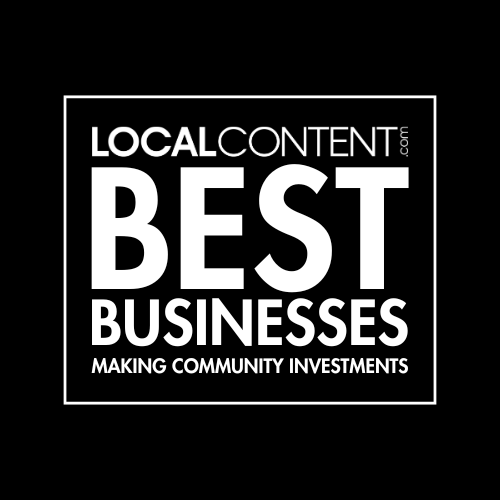Music festivals across the United States have long been celebrated as cultural events that draw massive crowds, but their economic impact often goes unnoticed. For small towns and big cities alike, these festivals are more than just entertainment—they’re economic powerhouses that generate millions of dollars for local businesses and municipalities. From boosting tax revenues to supporting small vendors and creating jobs, the economic ripple effects of festivals can transform communities.
Here’s a closer look at how three major music festivals—Coachella, Lollapalooza, and Bonnaroo—provide real economic benefits, spotlighting the towns and cities that reap the rewards.
Coachella Valley Music and Arts Festival: Indio, California
Each spring, the small city of Indio, California, transforms into the epicenter of music and culture as the Coachella Valley Music and Arts Festival takes over. Spanning two weekends, the festival draws about 250,000 visitors from around the world, filling hotels, restaurants, and shops across the region.
Economic Impact
The numbers tell a powerful story. According to a 2022 economic report, Coachella pumps more than $700 million into the Southern California economy annually. Of that, roughly $106 million flows directly into the Coachella Valley, where local businesses see record-breaking profits.
Hotels and vacation rentals in surrounding towns like Palm Springs and La Quinta report near-full capacity during the festival. Some short-term rental properties charge triple their usual rates, with bookings often secured months, or even a year, in advance. Local restaurants, bars, and shops are also inundated with visitors looking to extend their stay and explore the region.
Indio itself benefits significantly from Coachella-related tax revenue. In 2018, for example, the city collected $3 million in hotel occupancy taxes during the festival weekends—funds that help maintain public services, parks, and schools.
For local workers, the festival creates thousands of jobs in hospitality, event production, transportation, and security. Seasonal opportunities give residents a chance to capitalize on the influx of visitors.
“Coachella isn’t just a music festival; it’s an economic engine for our entire region,” said one Riverside County official.
Lollapalooza: Chicago, Illinois
Chicago’s Grant Park becomes a global hotspot every summer when Lollapalooza rolls into town. The four-day festival draws roughly 400,000 attendees, and with it comes a massive economic boost to the city’s businesses and tax coffers.
Economic Impact
According to a recent economic study, Lollapalooza generates more than $330 million annually for the city of Chicago. Hotels, restaurants, and bars in neighborhoods like the Loop, River North, and South Loop experience some of their busiest days of the year.
Hotel occupancy rates during the festival routinely exceed 90%, far surpassing the city’s typical summer average of 75%. For businesses, the influx of visitors brings unprecedented foot traffic. Ride-share drivers, food trucks, and boutique shops all benefit from the crowds exploring the city before and after performances.
In addition to stimulating businesses, the festival adds millions in tax revenue to the city’s budget. Hotel occupancy taxes, sales taxes, and other related fees contribute directly to public services, infrastructure improvements, and park maintenance.
Lollapalooza’s organizers have also committed to giving back to the community, donating significant funds to support Grant Park and local youth programs.
Bonnaroo Music and Arts Festival: Manchester, Tennessee
In Manchester, Tennessee—a town of just 12,000 people—the Bonnaroo Music and Arts Festival is nothing short of transformative. Held on a sprawling 700-acre farm, the four-day camping festival attracts tens of thousands of music lovers from across the country, creating a major economic lift for the small rural community.
Economic Impact
Bonnaroo generates approximately $50 million annually for Manchester and the surrounding region. Local businesses, including gas stations, hotels, restaurants, and campgrounds, report a dramatic spike in revenue during the festival.
The event also creates significant opportunities for small business owners. Bonnaroo prioritizes working with local vendors, offering entrepreneurs a chance to set up food stands, craft stalls, and merchandise booths within the festival grounds. For many, it’s their most profitable event of the year.
Tax revenue from ticket sales and increased local spending contributes directly to Coffee County’s budget, funding schools, public safety, and infrastructure projects. Since its inception, Bonnaroo has also donated more than $7 million to community programs, supporting education, the arts, and regional development.
The long-term impact of Bonnaroo has put Manchester on the map as a destination for music fans year-round, bringing additional tourism dollars outside of festival season.
The Broader Economic Impact of Festivals
From rural communities to bustling urban centers, music festivals have become vital economic drivers, offering real benefits for municipalities and local businesses. They generate millions in revenue, create jobs, and drive tourism, all while building community pride and global visibility.
Events like Coachella, Lollapalooza, and Bonnaroo highlight the ripple effect of festivals—how a single weekend can fuel economic activity that lasts far beyond the final encore.
For small businesses, vendors, and municipalities, these events are more than just entertainment—they’re economic lifelines. Whether it’s a gas station in Manchester, a boutique hotel in Indio, or a downtown bar in Chicago, music festivals continue to prove that they’re worth far more than the price of admission.










